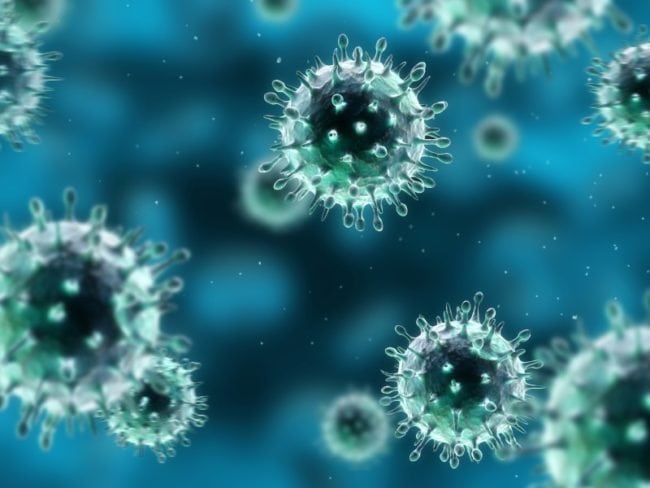How Polyphenols In Extra Virgin Olive Oil Combat Infection
Updated June 23 2023

Are you looking for a natural way to strengthen your body’s immune system against infection? Then look no further than extra virgin olive oil!
Contents:
- Why Extra Virgin Olive Oil Has Anti-Bacterial Properties
- Multiple Phenolic Compounds Found In Extra Virgin Olive Oil
- Recent Study Examines The Role Of Polyphenols
- Polyphenols And Biofilms
- Morocco Gold Extra Virgin Olive Oil Is High In Polyphenols
This popular culinary ingredient is packed with polyphenols, powerful antioxidants that have been proven to help the body fight off disease-causing bacteria and viruses.
In this blog post, we’ll explain what polyphenols are, how they work in EVOO, and why it’s an important addition to any health-conscious food lover’s kitchen. Read on for all the details!
Why Extra Virgin Olive Oil Has Anti-Bacterial Properties
Extra virgin olive oil is known to have anti-bacterial properties that can aid in fighting infections. The oil obtains these properties from its composition of fatty acids. Specifically, olive oil contains high levels of oleuropein, which is a compound that gives olive oil its bitter taste and is also responsible for its anti-bacterial properties.
Oleuropein binds to the cell walls of harmful bacteria, preventing their growth and multiplication. Moreover, extra virgin olive oil is rich in antioxidants and has anti-inflammatory effects, which work in tandem with its anti-bacterial properties to strengthen the body’s immune system. In summary, extra virgin olive oil is a natural and effective way of fighting off harmful bacteria, making it an invaluable addition to any diet and daily routine.
Multiple Phenolic Compounds Found In Extra Virgin Olive Oil
It’s not just Oleupropein that does all the work in your bottle of extra virgin olive oil. Dozens of phenolic compounds have been identified in extra virgin olive oil (EVOO), each with their own unique health benefits. One of the benefits of these compounds is they have high bioavailability, extensive research reporting the anti-inflammatory, antimicrobial, antibacterial and antiviral properties obtained from these compounds.
Infections or infectious diseases are caused by viruses, bacteria, parasites, fungi and various other disease-causing agents. Once an infection is contracted, the human body relies on the immune system to fight the infection through a range of cellular, inflammatory, and immune reactions. Although there are medications to treat infection, naturally derived food sources such as EVOO also show promise in preventing and treating infection also.
Early in vitro studies showed that several polyphenols in EVOO have antibacterial properties against human pathogens, particularly oleuropein, tyrosol, and hydroxytyrosol. In a 5 minute room temperature test, hydroxytyrosol, and tyrosol decreased the activity of Listeria monocytogenes, the bacteria contracted from contaminated food that causes the bacterial infection known as Listeriosis.
Decarboxymethyl elenolic acid (EDA), p‑HPEA-EDA, and 3,4‑DHPEA-EDA have been shown to have greater antimicrobial activity than the commercial disinfectants glutaraldehyde and ortho-phthalaldehyde. The phenolic compound oleocanthal has been shown to inhibit the growth of Helicobacter pylori bacteria, a bacteria associated with peptic ulcer and gastric cancer development.
Hydroxytyrosol and oleuropein have been shown to have antiviral activity in a dose-dependent manner. They were shown to inhibit the main viral fusing protein in human immunodeficiency virus (HIV)-1 target cells. Hydroxytyrosol has been shown to disrupt the influenza virus. Oleuropein has been shown to have anti-hepatitis B activity.
In recent times, researchers have begun to understand the role of intestinal microorganisms (gut microbes) in the overall health of the immune system. Therefore, protection against the growth of certain microorganisms can help in the treatment of some infectious diseases.
A study, published in Journal of Nutritional Biochemistry, 2016, established that changes in gut microbes in subjects with metabolic syndrome had immune enhancing effects. The authors concluding that “the consumption of a Mediterranean diet increased the abundance of the Bacteroides genus member B. thetaiotaomicron and F. prausnitzii, which suggest that the consumption of this diet may increase or maintain a microbiota with anti-inflammatory capability.”
Recent Study Examines The Role Of Polyphenols
A recent study by researchers at the National Research Council’s Institute of Food Sciences and the University of Salerno has shown that polyphenols from three different olive oil varieties have an inhibitory effect against several bacterial strains.
The tests were performed using 2.5 and 4.9 micrograms of the three polyphenol extracts against different pathogens. The results showed that the minimum concentration necessary to inhibit the growth of the pathogenic tester strains was low for all the polyphenolic extracts. This confirmed their general capacity to inhibit the growth of pathogenic or unwanted microorganisms.
In particular, all three extracts were effective in inhibiting the growth of Escherichia coli, a bacterium that is one of the causes of urinary tract infections. The three extracts also were found to be capable of inhibiting the growth of Pseudomonas Aeruginosa, a well-known pathogen that is responsible for the formation of biofilms.
Polyphenols And Biofilms
Polyphenols, the natural compounds found in many plant-based foods and beverages, may have powerful protective qualities when it comes to fighting biofilms. Recent research studies have shown that polyphenols found in extra virgin olive oil, for example, can help prevent the formation of biofilms, which are notorious for their ability to shield bacteria from antibiotics and other antifungal treatments.
The chemical properties of these polyphenols seem to make it harder for microbial communities to adhere to surfaces, thus disrupting the formation of biofilms and making them easier to eradicate. By incorporating polyphenol-rich foods and beverages, such as green tea, berries, and dark chocolate, into your diet, you may be able to boost your body’s natural defenses against biofilms and their associated health risks.
Biofilms are densely packed communities of microbial cells that grow on living or inert surfaces and surround themselves with secreted polymers. Because the protective shell can keep out potential treatments, biofilms are at their most dangerous when they invade human cells or form on sutures and catheters used in surgeries. In American hospitals alone, thousands of deaths are attributed to biofilm-related surgical site infections and urinary tract infections.
“They gave us remarkable results in terms of their activity against pathogenic species, namely those that are responsible for the formation of biofilms. This could be a basis of complementary studies to formulate ideal drugs of natural origin, composed of optimal mixtures of polyphenols, which are able to exercise with the minimum effort, in terms of quantity, and the maximum result, namely against the greatest number of pathogens, their antibacterial efficacy,”
Filomena Nazzaro, senior scientist at the National Research Council’s Institute of Food Sciences, Italy
Morocco Gold Extra Virgin Olive Oil Is High In Polyphenols
The high polyphenol content of Morocco Gold extra virgin olive oil is dependent on three factors. First is the variety of the olive, secondly the climate and terroire of the growing region and thirdly the actual time in the growing season that the crop is harvested.
Morocco Gold is pressed from the Picholine Marocaine, the only type of olive to go into Morocco Gold. Oil from this variety is renowned for it’s high polyphenol count, oxidative stability and longevity.
Our olives are grown in a valley that is about 2,000 feet above sea level. This helps to create the additional climatic challenges that encourage polyphenol uptake within the olive tree. It is also an area with naturally occurring high phenols in the soil itself.
In soils, phenols are released over extended period of time from decomposing plant materials. This causes complex organic compounds to be slowly oxidized. Or to break down into simpler forms of sugars, amino sugars, aliphatic and phenolic organic acids. These are further transformed into microbial biomass or are reorganized, and further oxidized, into humic assemblages (fulvic and humic acids), which bind to clay minerals.
There has been a long debate about the ability of plants to uptake humic substances. And through their root systems and to metabolize them. There is now a consensus about how humus plays a hormonal role rather than simply a nutritional role in plant physiology. Olive trees grown in ‘challenging’ conditions encourage the uptake of naturally occurring phenols in the soil. This in turn aids the circulatory system within the olive tree, with the phenols eventually finding their way to the olive fruit itself.
Thirdly, our olives are picked when the fruit is young and green. As the olives age on the tree, the colour of the olive changes to red and then black, the size of the olive increases thus producing more oil, but the polyphenol level decreases. There is a great deal of expertise within the farming community. We collect our harvest at optimum time with maximum polyphenol level.
